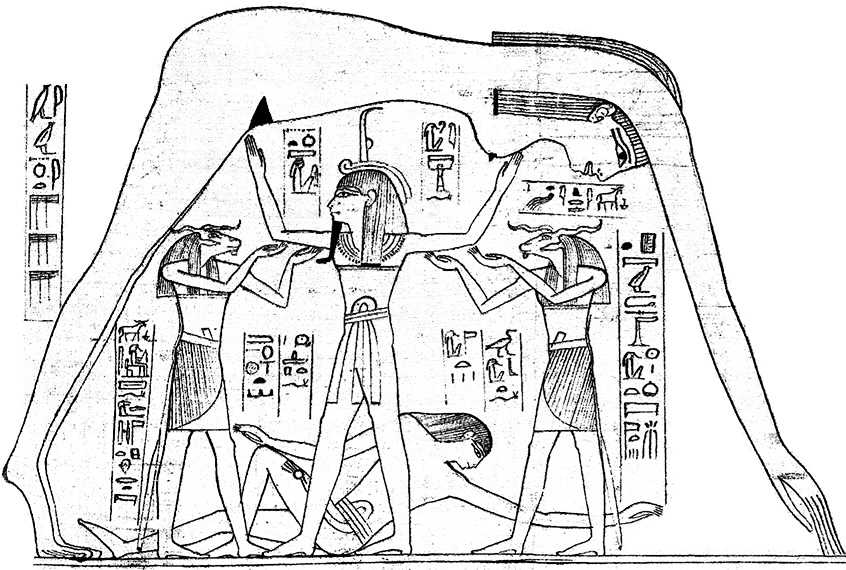Shu
Shu (Egyptian šw, "emptiness" or "he who rises up") was one of the primordial Egyptian gods, spouse and brother to the goddess Tefnut, and one of the nine deities of the Ennead of the Heliopolis cosmogony.
He is the god of air, moisture, and wind.
Family
In Heliopolitan theology, the creator god Atum created the first couple of the Ennead, Shu and Tefnut by masturbating. As such, Shu was one of the ancient, primordial gods.
He subsequently fathered Nut and Geb and was grandfather of Osiris, Isis, Set, and Nephthys. His great-grandsons are Horus and Anubis.
God of air
As the air, Shu was considered to be a cooling, and thus calming, influence, and pacifier. Due to the association with dry air, calm, and thus Ma'at (truth, justice, order, and balance), Shu was depicted as the dry air/atmosphere between the Earth and sky, separating the two realms after the event of the First Occasion. Shu was also portrayed in art as wearing an ostrich feather. Shu was seen with between one and four feathers. The ostrich feather was symbolic of lightness and emptiness.
Fog and clouds were also Shu's elements and they were often called his bones. Because of his position between the sky and Earth, he was also known as the wind.
Although Shu is often considered a god of the air, it is more accurate to say he is the god which represents moisture in the air. Even more specifically, he is the primordial mist which existed before the creation of the physical world and the heavens.
Mythology
Shu and Tefnut, the first pair of cosmic elements, created the sky goddess, Nut, and the Earth god, Geb. Shu separated Nut from Geb as they were in the act of love, creating duality in the manifest world: above and below, light and dark, good and evil. Prior to their separation, however, Nut had given birth to the gods Isis, Osiris, Nephthys and Set. The Egyptians believed that if Shu did not hold Nut (sky) and Geb (Earth) apart there would be no way for physically-manifest life to exist.
In a much later myth, representing a terrible weather disaster at the end of the Old Kingdom, it's said that Tefnut and Shu once argued, and Tefnut left Egypt for Nubia (which was always more temperate). It was said that Shu quickly decided that he missed her, but she changed into a cat that destroyed any man or god that approached. Thoth, disguised, eventually succeeded in convincing her to return.
Master of the decans
In one origin story explaining how the Egyptian decans came to rule over the night sky, after the primordial gods rebelled against Ra and tried to overthrow him, he defeated them and cut them into pieces to mitigate their power. Ra then threw their pieces up into the sky and gave each part rulership over a ten day period of the year. This formed the entire basis of Egyptian astrology and the system of 36 decans later used by Hermetic magicians.
This myth says that Ra placed Shu and Thoth in joint command over the decans, with Shu ensuring that Ra's commands were carried out through Thoth's instructions. This fit into the Egyptian conception of the stars being moved through the sky through the power of divine wind, which would have involved Shu's airy body.
Appearance
Shu is mostly represented as a man. Only in his function as a fighter and defender as the sun god and he sometimes receives a lion's head. He carries an ankh, the symbol of life.
Greek syncretization
The Greeks associated Shu with Atlas, the primordial Titan who held up the celestial spheres, as they are both depicted holding up the sky.
